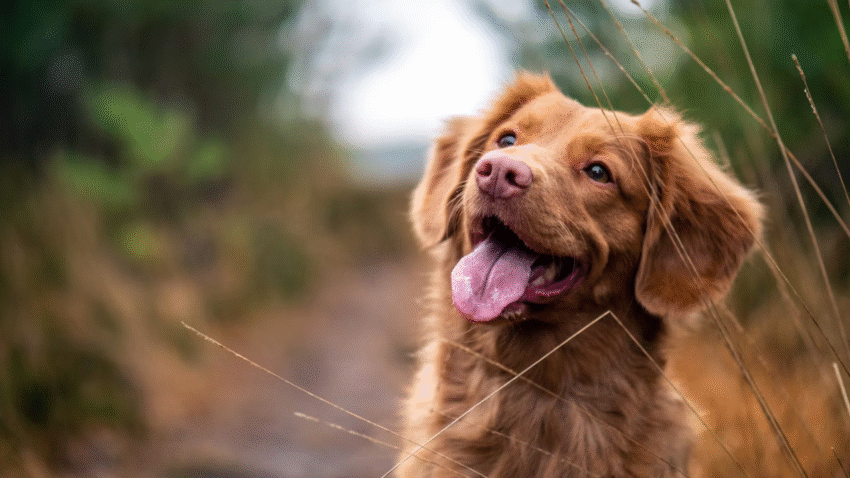Introduction
Struggling with a dog that ignores you when it matters most? Teaching your dog to come when called is one of the most important skills you can train—not just for convenience, but for their safety too. In this guide, you’ll learn how to train your dog to come when called, step by step. Whether you’re starting with a puppy or working with an adult dog, these tips will help you build a reliable recall and strengthen your bond.
Why Teaching Recall Matters for Dogs
A strong recall can save your dog’s life. It ensures they return to you even in distracting or dangerous situations, like chasing a squirrel near a road or wandering too far at the park. Here’s why this skill is essential:
- Safety: Being able to call your dog back can prevent accidents or injuries.
- Freedom: Dogs with reliable recall can enjoy off-leash play in safe areas.
- Better Behavior: Recall training strengthens your overall communication and leadership.
- Peace of Mind: Knowing your dog will come when called eases stress in public settings.
Whether you own a playful puppy or a stubborn older dog, recall is a must-have obedience skill for any responsible owner.
Step-by-Step Guide to Training Recall
Step 1: Choose a Command Word
Pick a simple word or phrase, like “Come,” “Here,” or even a unique word your dog doesn’t hear often.
- Keep it consistent.
- Avoid using their name only as the recall word.
Step 2: Start Indoors with Minimal Distractions
Begin in a quiet room with few distractions.
- Sit on the floor and get your dog’s attention.
- Say their name followed by the recall word in a happy tone (“Bella, come!”).
- When they come, reward with high-value treats and praise immediately.
Step 3: Use a Long Leash for Control Outdoors
Once your dog responds reliably indoors, move outside using a long leash (15-30 feet).
- Let them explore within range.
- Call them back using your cue.
- Reward with a treat, a toy, or praise.
- Avoid pulling the leash unless necessary.
Step 4: Practice in Different Locations
Dogs don’t generalize well, so practice in multiple places:
- Backyard
- Local park (on leash)
- Dog-friendly trails
- Friend’s yard
- Beach or lakefront
Step 5: Add Distance and Distractions Gradually
Increase difficulty slowly:
- Increase the distance between you and your dog.
- Add distractions like other people or animals.
- Reward generously when they succeed.
- If they fail, reduce the difficulty and try again.
Step 6: Use a Recall Game to Make It Fun
Try the “Back and Forth Game”:
- Two people stand far apart and call the dog back and forth.
- Give treats or toys when they arrive.
- Use excitement to build enthusiasm for recall.
Step 7: Practice Daily and Stay Consistent
Consistency builds habit:
- Train 5–10 minutes a day.
- Use recall during daily life (e.g., calling from another room, before meals).
- Vary rewards to keep your dog engaged.
Step 8: Transition to Off-Leash in Safe Areas
When your dog responds reliably:
- Try fenced parks or enclosed spaces for off-leash training.
- Use a GPS collar if necessary.
- Always supervise closely.
Common Mistakes to Avoid
1. Repeating the Command
- Don’t say “Come, come, come!” over and over.
- It teaches your dog they don’t have to respond right away.
- Say it once and follow up with action if needed.
2. Punishing After Recall
- Never scold your dog after they come to you, even if they were misbehaving before.
- Coming to you should always be a positive experience.
3. Only Using Recall to End Fun
- If you only call them to end play or go home, they’ll resist.
- Occasionally call them, reward, and release them to play again.
4. Calling When You Know They Won’t Come
- Avoid setting your dog up to fail.
- Only call when you’re sure you can reinforce the behavior.
5. Not Rewarding Enough
- Don’t skimp on the rewards.
- Use their favorite treats, toys, or even a chase game as a reward.
Extra Tips & Recommendations
Use a Whistle
- A dog whistle can be more consistent than your voice.
- Great for long distances or windy days.
Reward With Variety
- Mix up rewards: treats, toys, belly rubs, or freedom to explore.
- Keeps recall exciting.
Recall Before Meals
- Build anticipation by calling them before putting down their food.
- They’ll associate recall with a high-value reward.
Helpful Tools
- Long Training Leash: Gives space but maintains control.
- Clicker: Reinforces correct behavior instantly.
- Treat Pouch: Makes rewarding fast and easy.
Related Articles
- How to Train Your Puppy Their Name
- How to Set a Daily Routine for Your New Puppy
- How to Stop Your Dog from Barking Excessively
Conclusion
Teaching your dog to come when called takes time, patience, and consistent practice, but it’s one of the most rewarding skills you can develop. With the right approach, your dog will respond eagerly and reliably, giving you peace of mind and them more freedom to explore safely. Stay positive, be consistent, and make it fun—your dog will thank you!
